Picture this: you’re driving through the dry, golden landscapes of Rajasthan when suddenly, the road starts climbing. The air gets cooler. Green trees replace the desert scrub. Welcome to Mount Abu – Rajasthan’s best-kept secret and the state’s only hill station.
While most people think of Rajasthan as a land of forts and deserts, Mount Abu flips that script completely. Sitting pretty in the Aravalli hills at over 4,000 feet, this charming town offers something totally different – cool weather, misty mornings, serene lakes, and some of the most stunning marble temples you’ll ever see.
Whether you’re planning a Mount Abu family friendly trip, looking for the perfect Mount Abu honeymoon spot, or just need a break from the summer heat, this complete Mount Abu travel guide has you covered. I’ll walk you through the top Mount Abu tourist attractions, share some hidden spots that even many locals don’t know about, and give you practical tips to make your trip absolutely perfect.
Ready to explore? Let’s dive into the best places to visit in Mount Abu!
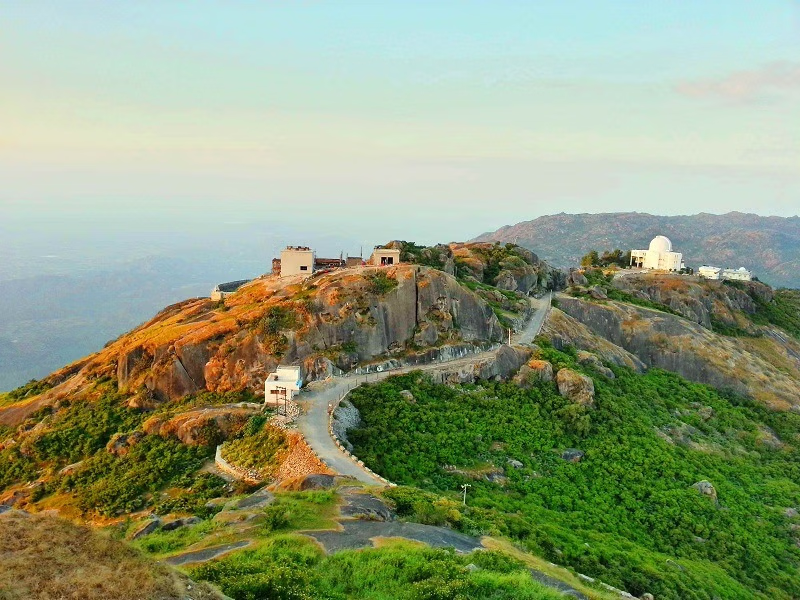
Quick Travel Information
| Detail | Information |
| Location | Sirohi District, Rajasthan, India |
| Altitude | 1,220 meters (4,003 feet) |
| Nearest Railway Station | Abu Road (28 km away) |
| Nearest Airport | Udaipur (185 km) |
| Best Time to Visit | October to March |
| Ideal Trip Duration | 2-3 Days |
| Famous For | Only hill station in Rajasthan, Dilwara Temples, Nakki Lake |
| Climate | Pleasant year-round, cooler than plains |
How to Get There & Best Time to Visit
Getting to Mount Abu
Reaching this beautiful hill station Rajasthan is easier than you might think. Here’s how:
By Train: The closest railway station is Abu Road, about 28 kilometers away. Trains connect Abu Road to major cities like Delhi, Mumbai, Ahmedabad, and Jaipur. From Abu Road, you can hire a taxi or catch a state transport bus that winds up the scenic mountain road. The drive takes about 45 minutes and offers gorgeous views.
By Air: The nearest airport is Maharana Pratap Airport in Udaipur, roughly 185 kilometers away. You can also fly into Ahmedabad (around 220 km). From either airport, rent a car or book a taxi to reach Mount Abu.
By Road: If you’re road-tripping, Mount Abu is well-connected by state highways. The drive from Udaipur takes about 3-4 hours, while Ahmedabad is around 4-5 hours away. The roads are generally good, and the journey itself is part of the adventure.

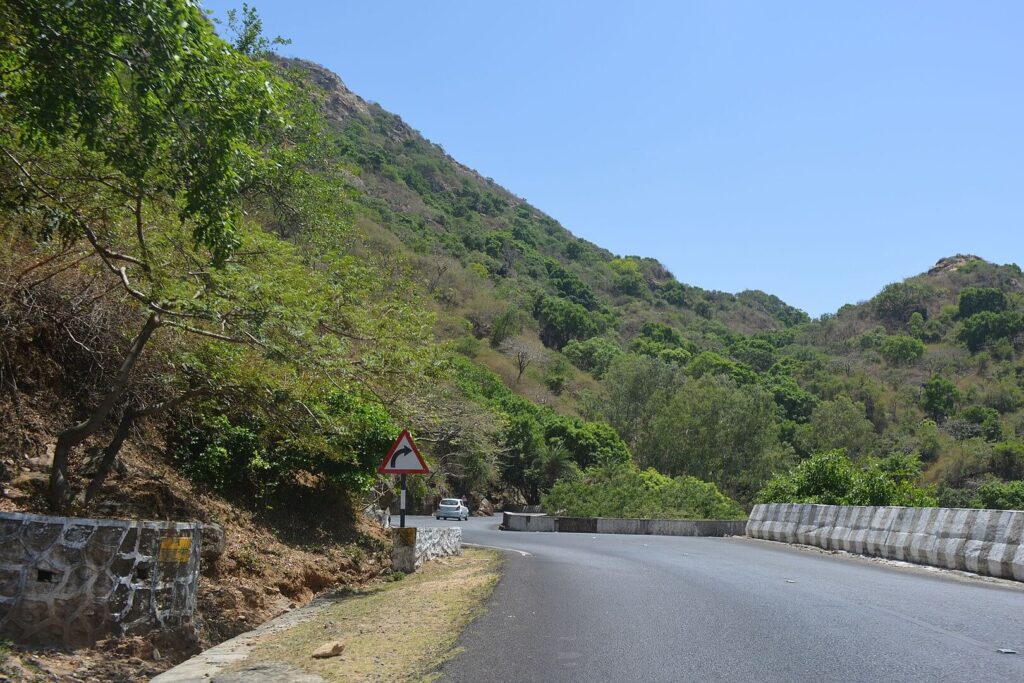
Mount Abu Best Time to Visit
Timing your visit right can make a huge difference. Here’s what each season brings:
Winter (November to February): This is peak season and for good reason. Temperatures hover between 11°C to 28°C – perfect weather for Mount Abu sightseeing. The days are sunny and comfortable, while evenings get pleasantly cool. You might need a light jacket after sunset. This is the best time for families and honeymooners.
Summer (March to June): While the plains of Rajasthan are scorching, Mount Abu stays relatively cool with temperatures between 23°C to 33°C. This makes it a popular summer escape for people from nearby cities. Expect more crowds, especially during April and May when schools are on break.
Monsoon (July to September): The rains transform Mount Abu into a lush green paradise. Waterfalls come alive, and the entire landscape looks freshly washed. However, some outdoor activities might be limited. If you love the rain and don’t mind occasional drizzles, this season offers a different kind of beauty.
Post-Monsoon (October): This is actually my favorite time. The monsoon has just ended, everything is still green, but the weather has cleared up. You get the best of both worlds – beautiful scenery and comfortable weather, with fewer crowds than winter.
Local Tip: Want to beat the crowds at popular spots like Nakki Lake or Dilwara Temples? Head there early morning, around sunrise. You’ll get amazing photos with soft light and have these beautiful places almost to yourself.
Top Attractions: The Essentials
Nakki Lake Mount Abu
If Mount Abu has a heart, it’s Nakki Lake. This stunning artificial lake sits right in the middle of town and is probably the most famous of all Mount Abu tourist attractions.
Legend says the lake was dug out by gods using just their nails (nakh means nail in Hindi) – which explains the name. Whether you believe the story or not, the lake is genuinely beautiful. Surrounded by rocky hills and green trees, it’s the perfect spot to relax and watch the world go by.
You can rent a paddleboat or rowboat and spend an hour on the calm waters. Families love this activity, and it’s especially romantic during sunset. The walking path around the lake is about 1 kilometer long and makes for a lovely evening stroll. Street vendors sell fresh corn, ice cream, and local snacks along the way.
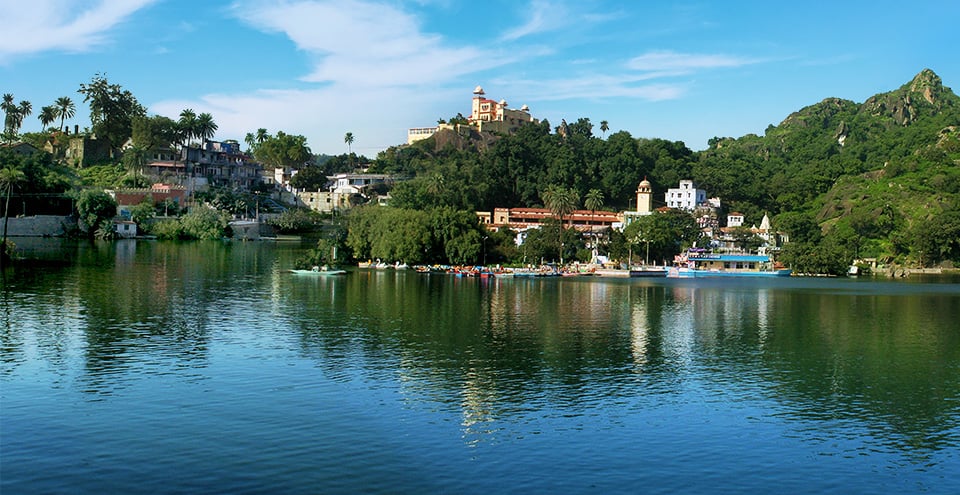
Don’t miss Toad Rock near the lake – it’s a natural rock formation that looks exactly like a giant toad about to jump into the water. It’s become a famous photo spot, and the view of the lake from up there is worth the short climb.
Timings: Open all day, but boating is available from 9 AM to 6 PM
Entry: Free to walk around; boating costs around ₹150-300 per boat
Dilwara Jain Temples Mount Abu
Prepare to have your mind blown. The Dilwara Jain Temples are not just religious sites – they’re masterpieces of marble art that’ll leave you speechless.
Built between the 11th and 13th centuries, these five temples feature intricate marble carvings that are so detailed, so precise, you’ll wonder how human hands created them. The Vimal Vasahi and Luna Vasahi temples are particularly stunning. Every pillar, every ceiling, every doorway is carved with flowers, dancers, elephants, and geometric patterns so fine that light passes through the marble.
The best time to visit is mid-morning when natural light streams through the structures and makes the white marble glow. Photography inside is not allowed, which actually helps you stay present and really absorb the beauty. This is one of the best places in Mount Abu for anyone who appreciates art, history, or architecture.
Remember to dress modestly – no shorts, skirts, or sleeveless tops. You’ll need to remove your shoes before entering, and leather items (belts, bags) are not allowed inside.
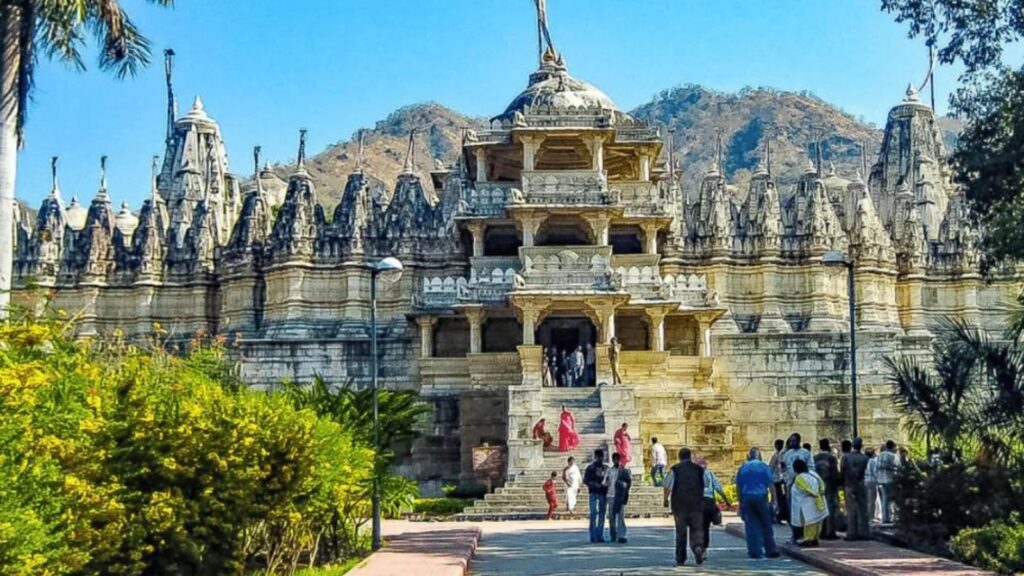
Timings: 12 PM to 6 PM (closed between 12 PM to 3 PM for prayers)
Entry: Free (donations welcome)
Guru Shikhar Viewpoint
Want to stand at the highest point in the entire Aravalli hills? Head to Guru Shikhar, which sits at 1,722 meters above sea level.
The drive up is an adventure itself, with hairpin bends and spectacular valley views. At the top, you’ll find a small temple dedicated to Guru Dattatreya and an observation tower that offers 360-degree views of the surrounding mountains and valleys.
On a clear day, you can see for miles. The sunrise here is magical – the sun slowly lights up the green hills, and if you’re lucky, you might catch morning mist rolling through the valleys below. Sunset is equally beautiful, with the sky turning shades of orange and pink.
The climb up the steps to the temple is a bit steep, but totally manageable. There are small shops at the top selling tea and snacks, which taste even better with that view.
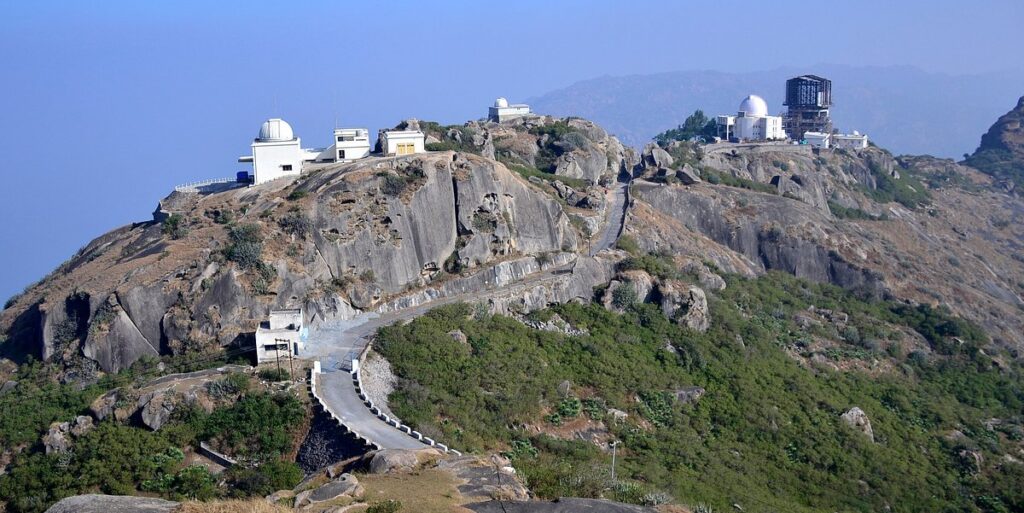
Timings: 6 AM to 6 PM
Entry: Free
Distance from main town: About 15 km
Achalgarh Fort Mount Abu
History buffs, this one’s for you. Achalgarh Fort sits on a rocky hilltop and dates back to the 14th century, though the site itself is much older.
Unlike more crowded tourist spots, Achalgarh feels raw and authentic. The fort walls blend into the rocky landscape, and you can explore the ruins at your own pace. Inside the fort complex, you’ll find the Achaleshwar Mahadev Temple with its unique brass Nandi (bull statue) and natural rock formations that are considered sacred.
The views from the fort are incredible – rolling hills stretching to the horizon, small villages dotting the valleys, and if you visit during monsoon or just after, you might spot waterfalls cascading down the mountainsides.
What makes this spot special is that it’s not overrun with tourists. You get a real sense of history here, imagining what life must have been like centuries ago in this remote mountain fortress.
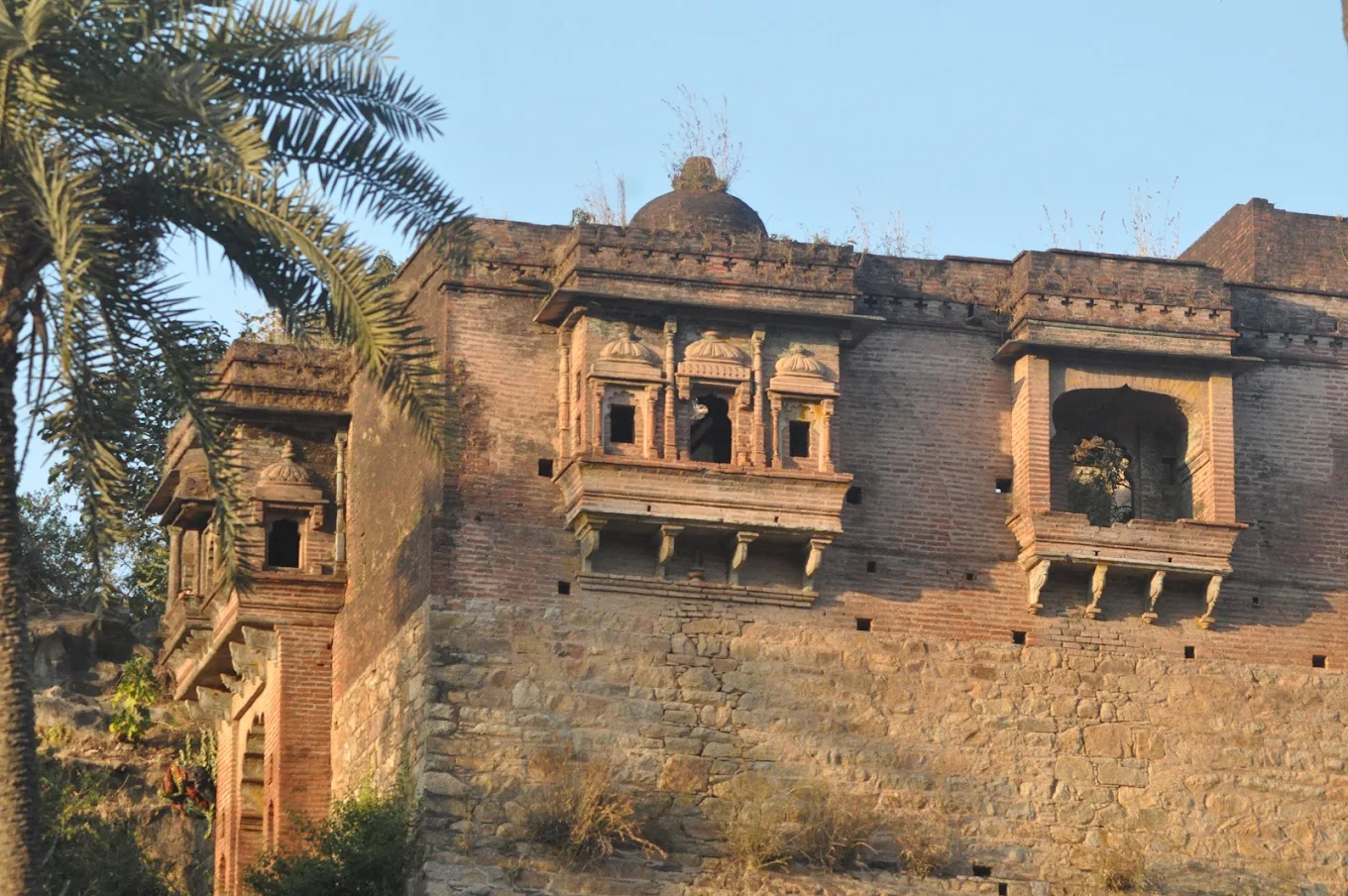
Timings: Sunrise to sunset
Entry: Free
Distance from main town: About 11 km
Adhar Devi Temple
Here’s where things get interesting. Adhar Devi Temple is literally carved into a rock, and reaching it requires climbing 365 steep steps cut into the mountain.
The temple is dedicated to Goddess Durga and hangs suspended from the rock – you actually have to bend down to enter through a low, narrow opening. It feels like entering a secret cave temple. Inside, the atmosphere is cool and quiet, with the constant sound of dripping water adding to the mystical vibe.
The climb might sound intimidating, but it’s totally doable. Take your time, stop for breathers (the views get better with each step), and you’ll make it. Families with kids do this regularly. The best part? The sense of achievement when you reach the top, plus the peaceful temple experience away from the crowds.
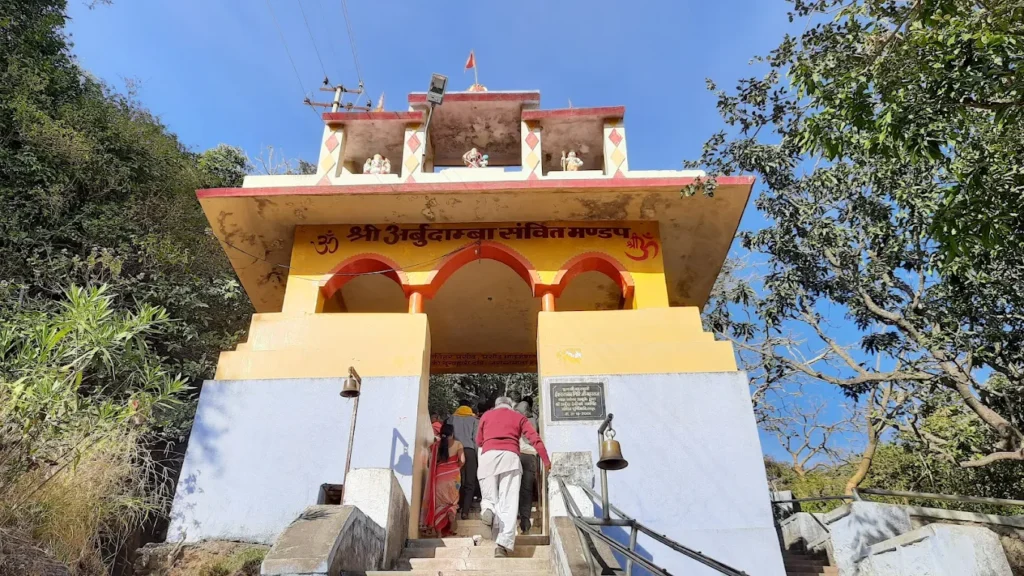
Timings: 5 AM to 8 PM
Entry: Free
Distance from main town: About 3 km
Sunset Point & Honeymoon Point
No Mount Abu honeymoon spot list is complete without these two romantic viewpoints.
Sunset Point does exactly what its name suggests – offers front-row seats to spectacular sunsets. The sky transforms into a canvas of reds, oranges, and purples as the sun dips behind the hills. It gets crowded (everyone loves a good sunset), but the vibe is fun and festive. Local vendors sell snacks and chai, and there’s something special about watching the sunset with strangers who are all equally mesmerized.
Honeymoon Point (also called Anadara Point) is slightly less crowded and offers equally stunning valley views. It’s a favorite for couples, obviously, but honestly, anyone can enjoy the peaceful atmosphere and beautiful scenery. Early morning visits here are magical when mist fills the valleys below.
Both spots are easily accessible by car or auto-rickshaw. Visit one at sunset and the other at sunrise to see the landscape in completely different light.
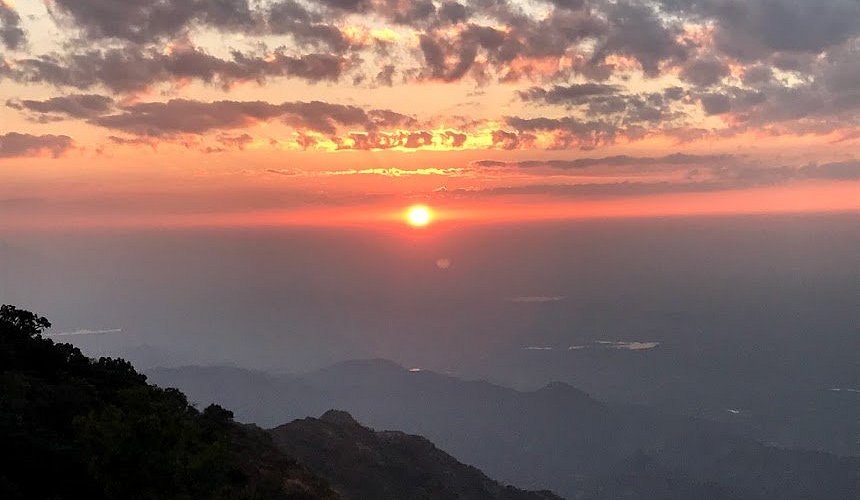
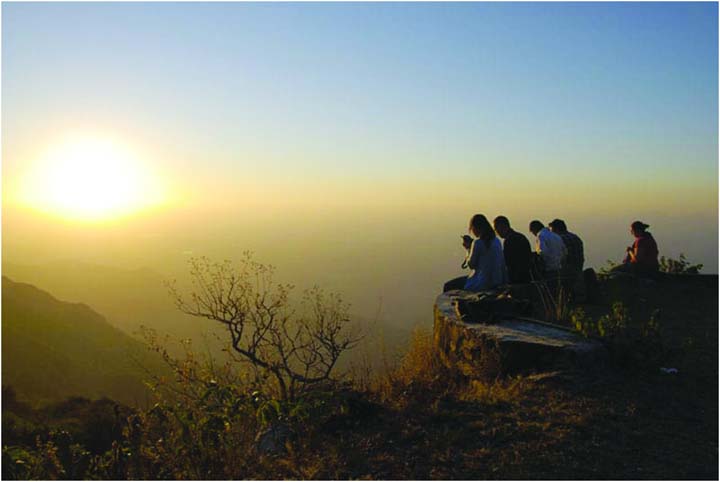
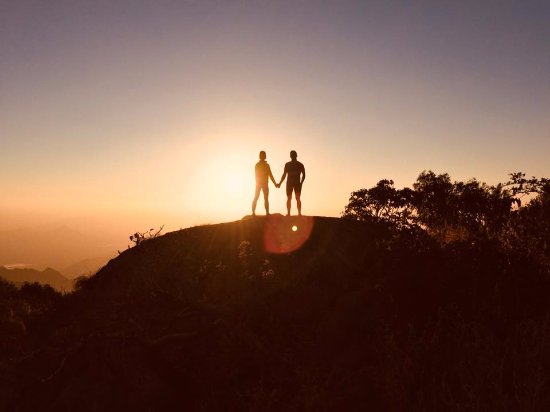
Timings: Open all day, best at sunset/sunrise
Entry: Free
Nature, Wildlife & Adventure
Mount Abu Wildlife Sanctuary
Nature lovers, rejoice! The Mount Abu Wildlife Sanctuary covers about 290 square kilometers of the Aravalli hills and is home to diverse Mount Abu nature & wildlife.
The sanctuary is known for its unique flora – you’ll see everything from bamboo groves to flowering shrubs that you won’t find in the desert plains. Wildlife includes leopards (rarely spotted), wild boars, langurs, foxes, and if you’re lucky, you might spot a sloth bear. Bird watchers will have a field day with over 250 species recorded here, including grey jungle fowl and eagles.
There are several trails through the sanctuary perfect for light trekking. The forest department offers guided walks that teach you about the local ecosystem. Even if you’re not into serious trekking, a simple walk through these green forests is refreshing and gives you a different perspective of Rajasthan beyond its desert image.
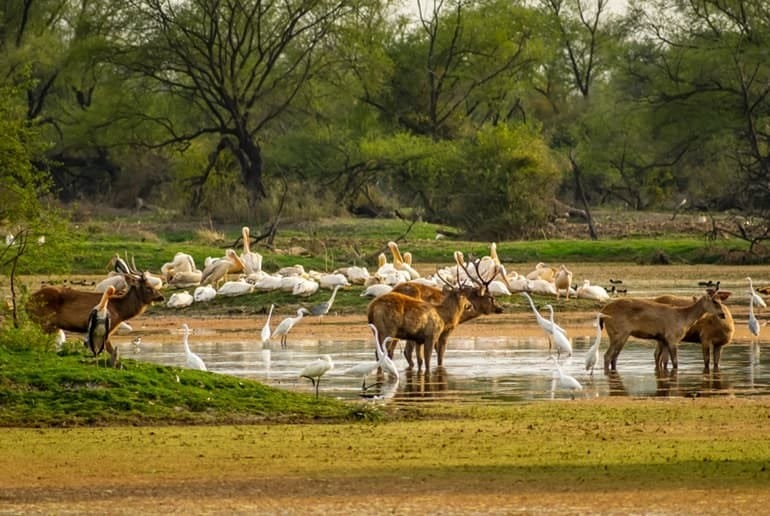
Timings: 8 AM to 5 PM
Entry: ₹10-25 per person, camera charges extra
Toad Rock & Hiking
Remember that Toad Rock I mentioned near Nakki Lake? It’s not just a photo spot – it’s also a fun little hiking challenge.
The climb to the top isn’t difficult, but it’s enough to get your heart pumping a bit. From the top, you get panoramic views of Nakki Lake and the town. It’s a favorite spot for photographers, especially during the golden hour before sunset.
The rocks around here are great for light bouldering if you’re into that. Just be careful, wear proper shoes, and don’t attempt anything risky. The area is popular with local adventure clubs who sometimes organize group hikes.
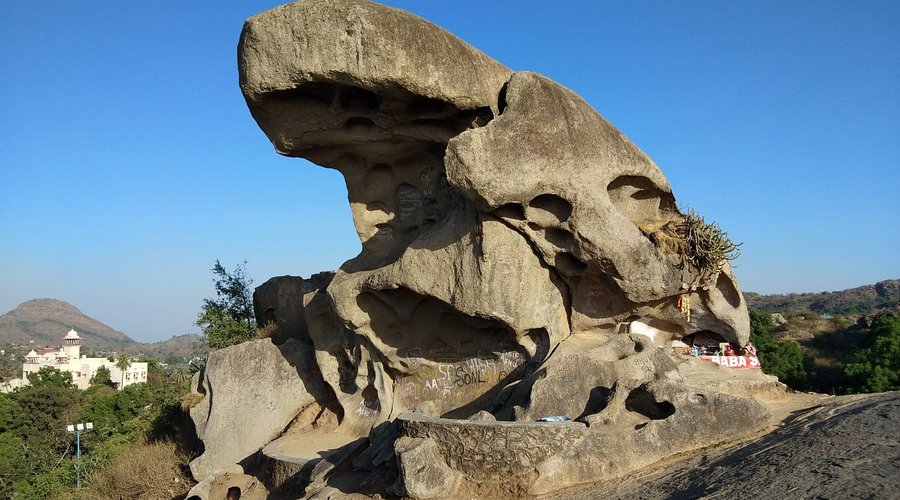
Mount Abu InfraRed Observatory (Unique!)
Here’s something most tourists miss – Mount Abu is home to India’s only infrared observatory run by the Physical Research Laboratory. The location was chosen because the atmospheric conditions here are perfect for astronomical observations.
While the main facility isn’t open to the general public, astronomy enthusiasts can sometimes arrange visits with prior permission. Even if you can’t get inside, the drive to the observatory offers incredible views, and you’ll feel like you’ve discovered something off the beaten path.
For more information on visiting, check the official Physical Research Laboratory website.
Hidden Gems & Local Secrets
Want to experience places to visit in Mount Abu that most tourists skip? Here are some insider tips:
Bailey’s Walk: This lesser-known trail near the Rajbhavan (Governor’s residence) offers peaceful forest walks with occasional wildlife sightings. It’s perfect for early morning jogs or quiet evening strolls.
Trevor’s Tank: A man-made reservoir that’s now a crocodile breeding ground (behind mesh, don’t worry!). It’s surrounded by forest and is a fantastic bird-watching spot. The peace and quiet here is a welcome break from more crowded attractions.
Local Food Scene: Skip the touristy restaurants and head to the food stalls around Nakki Lake in the evening. Try the local favorite – dabeli (spiced potato burger), fresh sweet corn roasted over coals, and the absolutely addictive kulfi falooda. The Gujarati thali at local joints is fantastic too since Mount Abu is close to the Gujarat border.
Cafe Culture: Mount Abu has developed a nice little cafe scene. Small cafes with mountain views serve great coffee and continental food. They’re perfect for lazy afternoons when you just want to read a book and watch the world go by.
Early Morning Magic: Set your alarm early at least once during your trip. The early morning mist, the quiet streets, the locals doing their morning routines – it’s a completely different Mount Abu that most tourists never see.
Cultural Experiences: If your visit coincides with local festivals like the Mount Abu Winter Festival (usually in December), don’t miss it. You’ll see traditional Rajasthani folk performances, music, and local crafts. It’s a great way to connect with the culture beyond just Mount Abu sightseeing.
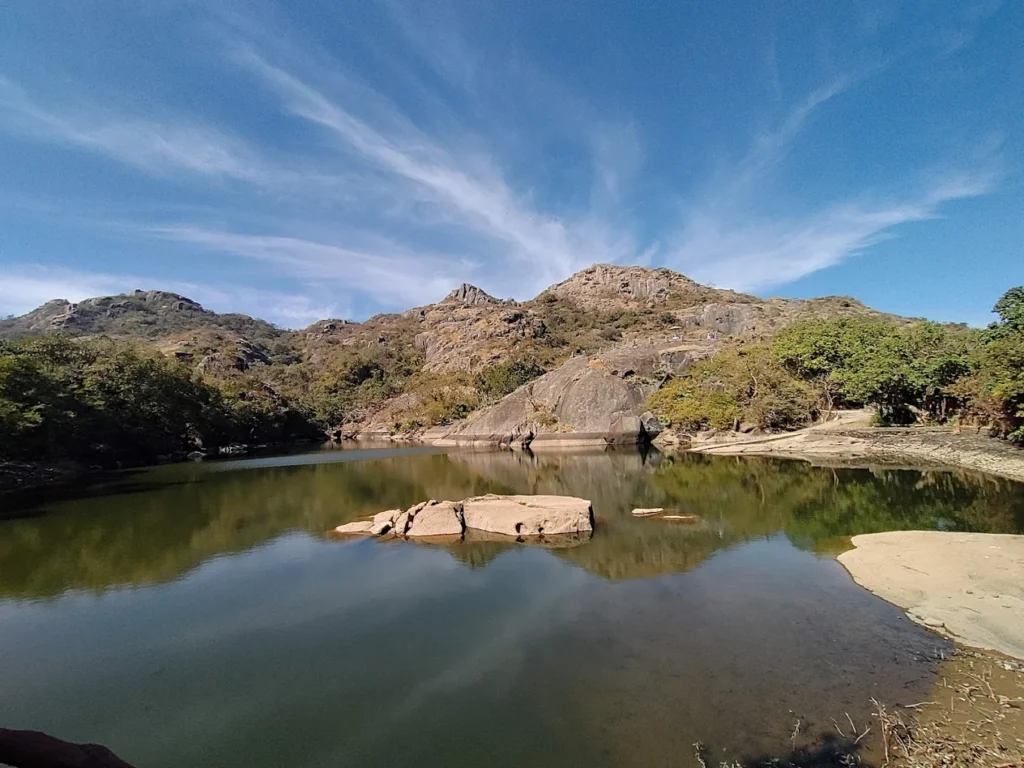
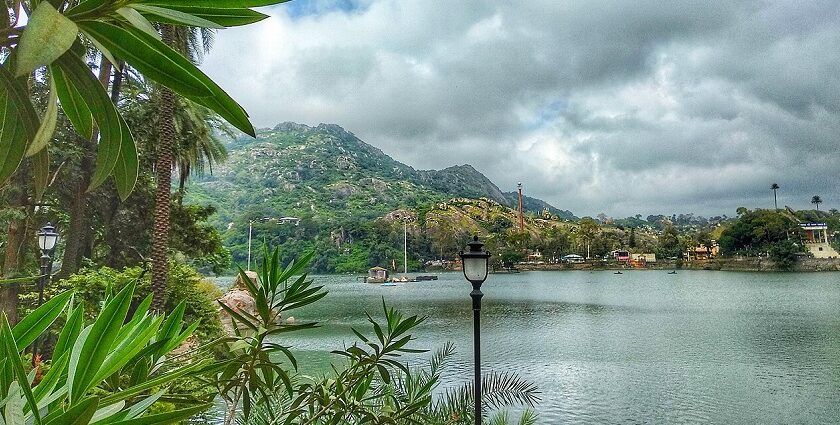
Family & Honeymoon Friendly Tips
For Families
Mount Abu is genuinely one of the best places in Mount Abu for family vacations. Here’s why it works so well:
Kid-Friendly Activities:
- Boating on Nakki Lake (kids love this!)
- Easy walks around the lake with ice cream stops
- The Toad Rock climb (manageable for kids 5+)
- Wildlife sanctuary walks (educational and fun)
- Toy train rides available near the market area
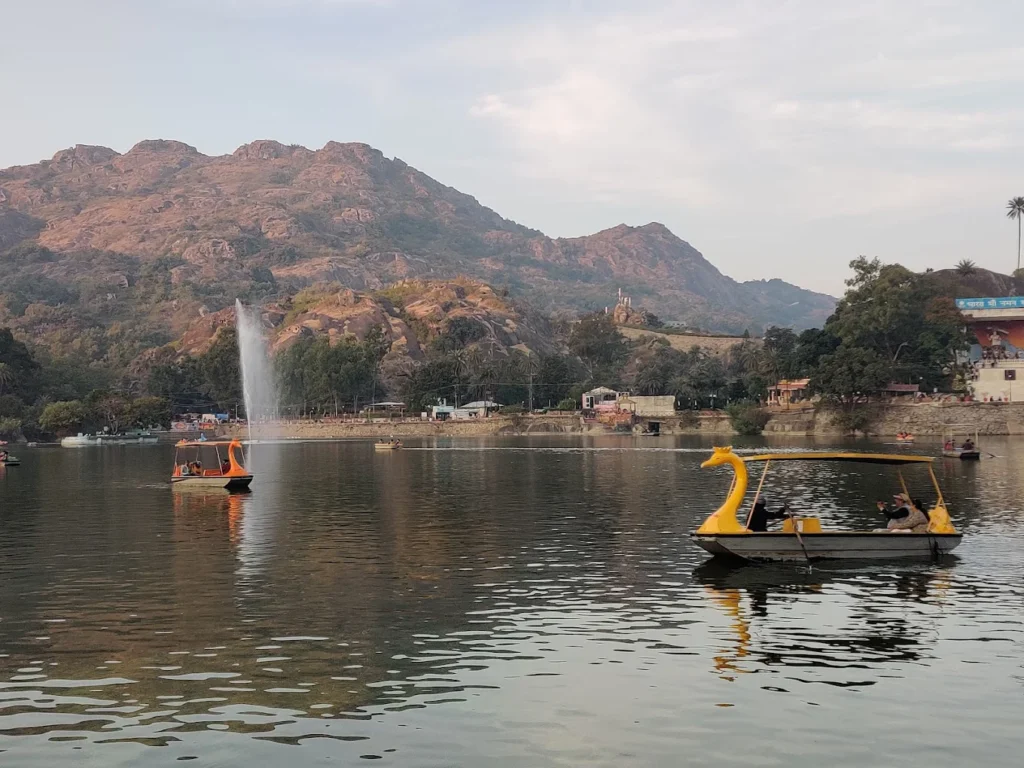
Accommodation: You’ll find plenty of family-friendly hotels and resorts with spacious rooms. Many offer garden areas where kids can play. Mid-range hotels near Nakki Lake are convenient and comfortable.
Food: Most restaurants understand that families need kid-friendly food. You’ll easily find pizza, pasta, sandwiches alongside Indian food. Fresh fruit and snacks are readily available everywhere.
For Couples
As a Mount Abu honeymoon spot, this place checks all the romantic boxes:
Romantic Experiences:
- Private boat rides on Nakki Lake at sunset
- Quiet walks through forest trails
- Couples spa treatments at resort hotels
- Candlelight dinners at rooftop restaurants
- Sunrise at Guru Shikhar with just the two of you
Where to Stay: Splurge on a heritage hotel or boutique resort slightly away from the main town. Places with valley views and private balconies add that extra romantic touch. Some resorts offer private dining experiences under the stars – definitely worth it for special occasions.
Quiet Spots: While Sunset Point gets crowded, spots like Trevor’s Tank, Bailey’s Walk, or early morning at Adhar Devi offer privacy and beautiful settings.
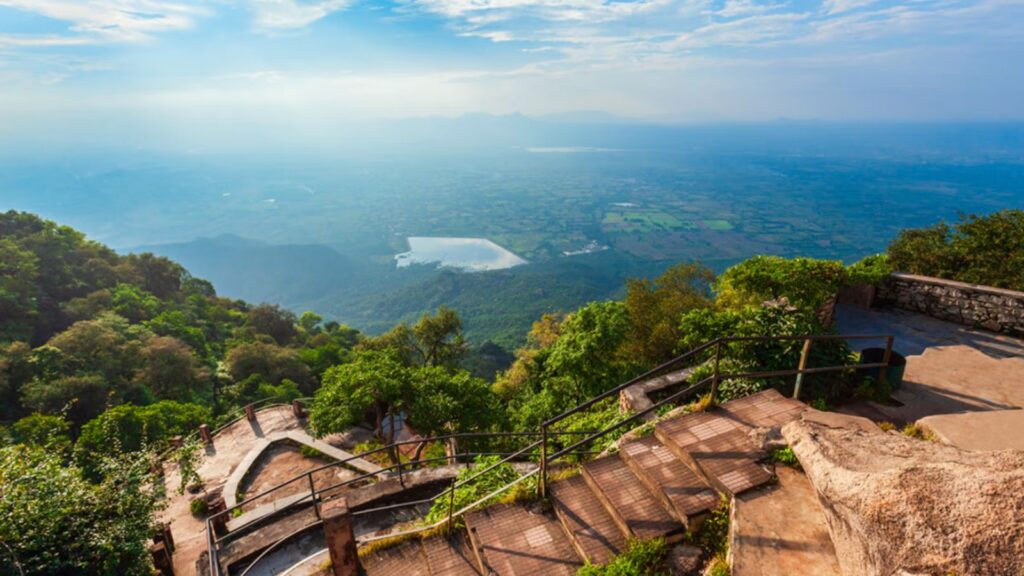
Accommodation Options
Budget (₹1000-2000/night): Plenty of decent guesthouses and budget hotels near the market area. They’re basic but clean and perfect if you’re spending most of your time exploring.
Mid-Range (₹2000-5000/night): Comfortable hotels with good amenities, often near Nakki Lake. You get spacious rooms, hot water, and sometimes restaurant services.
Luxury (₹5000+/night): Heritage properties, resort hotels with stunning views, pools, spas, and multi-cuisine restaurants. These are perfect for honeymoons or when you want to pamper yourself.
Pro Tip: Book well in advance if you’re visiting between October and February or during the December festival. Accommodation fills up fast during peak season.
Suggested 1-Day & 2-Day Itinerary
Quick 1-Day Mount Abu Plan
Got limited time? Here’s how to hit the highlights:
7:00 AM: Start early at Guru Shikhar for sunrise views
9:00 AM: Visit Dilwara Temples (they open at noon, so actually arrive by 12 PM)
2:00 PM: Lunch at a local restaurant near Nakki Lake
3:30 PM: Explore Nakki Lake, take a boat ride
5:00 PM: Head to Sunset Point for (you guessed it) sunset
7:00 PM: Dinner and walk around the market area
This is a packed day, but you’ll cover the major Mount Abu tourist attractions. Hire a taxi for the day (around ₹1500-2000) to make moving between spots easier.
Relaxed 2-Day Mount Abu Itinerary
Have an extra day? Here’s how to enjoy Mount Abu without rushing:
Day 1:
- Morning: Visit Dilwara Temples (12 PM opening), spend 2 hours appreciating the architecture
- Lunch: Try local food at restaurants near the market
- Afternoon: Explore Nakki Lake, take a boat ride, walk to Toad Rock
- Evening: Sunset Point, followed by shopping in the local market
- Night: Dinner at a rooftop restaurant with lake views
Day 2:
- Early Morning: Sunrise at Guru Shikhar (starts your day on a high note!)
- Breakfast: Head back to town for breakfast at a good cafe
- Mid-Morning: Visit Achalgarh Fort and temple complex
- Lunch: Pack a picnic or eat at a local spot
- Afternoon: Explore Mount Abu Wildlife Sanctuary or do the Adhar Devi Temple climb
- Evening: Relaxed time at Trevor’s Tank or Bailey’s Walk
- Night: Farewell dinner trying dishes you haven’t tasted yet
Getting Around
Local Transport Tips:
- Rent a scooter (₹500-700/day) if you’re comfortable riding. It gives you maximum flexibility.
- Auto-rickshaws are readily available. Negotiate the fare beforehand or insist on the meter.
- Taxis can be hired for half-day (₹1200-1500) or full-day (₹2000-2500) trips.
- Walking is great in the main town area, especially around Nakki Lake.
Sequence Tips:
- Do Dilwara Temples early in your trip when you’re still energized to appreciate the details.
- Save easier activities like lake boating for when you’re tired.
- Group together places that are close to each other to save travel time.
Practical Travel Tips & Things to Avoid
Smart Travel Tips
Photography: The light in Mount Abu is beautiful. Early morning (6-8 AM) and late afternoon (4-6 PM) offer soft, golden light that makes everything look magical. Bring a good camera or use your phone’s HDR mode for landscape shots.
Packing Essentials:
- Light jacket or sweater (even in summer, evenings can be cool)
- Comfortable walking shoes with good grip (lots of stairs and uneven paths)
- Sunscreen and sunglasses (high altitude means stronger sun)
- Water bottle (stay hydrated, especially if trekking)
- Modest clothing for temple visits
- Basic first aid and any personal medications
Money Matters: While major hotels and restaurants accept cards, carry enough cash for entry fees, street food, auto rides, and shopping. ATMs are available in the main town but can run out during peak season.
Stay Connected: Mobile network coverage is generally good in town but can be patchy in remote areas like the wildlife sanctuary.
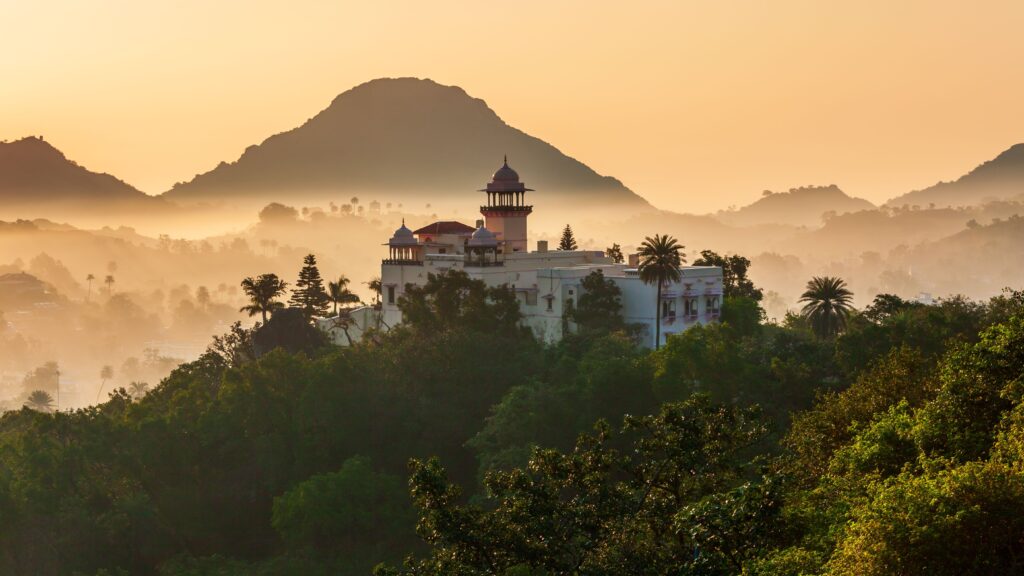
Things to Avoid
Don’t Trek Alone: If you’re planning serious hiking in the wildlife sanctuary, don’t go solo. Either join a group or hire a local guide. The terrain can be tricky, and it’s safer (and more informative) with someone who knows the area.
Respect Religious Sites: At Dilwara Temples and other religious places, follow dress codes strictly. Don’t rush through – these places deserve your time and respect.
Avoid Peak Hours: Popular spots like Nakki Lake and Sunset Point get very crowded between 5-7 PM on weekends. Visit early morning or late evening for a better experience.
Don’t Overpay: Auto-rickshaw drivers near tourist spots might quote inflated prices. Know the rough distances and fair prices. Don’t hesitate to negotiate or walk away if the price seems unfair.
Skip Plastic: Mount Abu has been trying to reduce plastic waste. Carry a refillable water bottle and cloth bags for shopping. Help keep these beautiful mountains clean.
Book Ahead: Don’t show up during Christmas, New Year, or the Winter Festival without hotel bookings. You’ll either pay triple the usual rate or struggle to find decent accommodation.
Best Booking Practices
Hotels: Book 2-3 months in advance for winter season travel. Check reviews on multiple platforms. Hotels near Nakki Lake are convenient but can be noisier than properties on the outskirts.
Activities: Boat rides at Nakki Lake don’t need advance booking. However, if you want a guided wildlife sanctuary tour, contact the forest department office a day before.
For official information about Rajasthan tourism and Mount Abu, visit the Rajasthan Tourism website.
Wrapping It Up
Mount Abu isn’t just another tourist destination you check off a list. It’s a place where Rajasthan shows you its cooler, greener side. Where ancient temples carved from marble make you question what humans are capable of creating. Where a simple boat ride on a lake at sunset becomes a memory you carry forever.
Whether you’re coming here with family, planning a romantic getaway, or just taking a break from city life, Mount Abu has something that speaks to everyone. The places to visit in Mount Abu I’ve shared here are just the beginning. The real magic happens when you wander off the main paths, chat with locals, try that street food stall everyone’s lining up at, and discover your own favorite quiet corner with a view.
The beauty of this hill station Rajasthan is that it keeps surprising you. Around every bend is another viewpoint. Behind every old building is a story. And within every temple, fort, or lake is an invitation to slow down and really experience the place, not just photograph it.
So pack that bag, book that hotel, and get ready to discover why Mount Abu has been a favorite escape for generations. Trust me, once you experience the cool mountain air, the stunning Mount Abu nature & wildlife, and the warmth of the people here, you’ll already be planning your next visit before you’ve even left.
Frequently Asked Questions
What are the best places to visit in Mount Abu for families?
Families love Nakki Lake for boating, the easy walking trails around the lake, and Toad Rock for a fun climb with great views. The Wildlife Sanctuary offers educational nature walks that kids enjoy, and the toy train rides near the market area are always a hit with younger children. Most attractions are family-friendly and don’t require strenuous physical activity.
How many days are enough for Mount Abu?
Two to three days is ideal for experiencing Mount Abu without rushing. Two days lets you cover all major attractions comfortably with time to relax. Add a third day if you want to explore the wildlife sanctuary thoroughly, enjoy some cafe time, or do off-beat activities. One day is possible but will be packed.
Is Mount Abu worth visiting in the monsoon?
Absolutely! While some tourists avoid monsoon (July-September), it’s actually a beautiful time to visit. The entire landscape turns lush green, waterfalls come alive, and the romantic, misty atmosphere is special. Just be prepared for occasional rain showers and check weather forecasts. Some outdoor activities might be limited, but the scenic beauty more than makes up for it. Hotel rates are also lower during this season.
Have you visited Mount Abu? What was your favorite spot? Drop a comment below and share your experience! And if you’re planning your trip, let me know if you have any questions – happy to help make your Mount Abu adventure unforgettable!
For more incredible travel guides and hidden gems across India, explore more articles at Xplore Heaven.
Read More Articles;
- Koundinya Wildlife Sanctuary Travel Guide 2026: Timings, Safari, Map, Reviews & Wildlife Highlights
- Kaas Plateau Travel Guide 2026: Best Time to Visit, Bloom Season, How to Reach & FAQs
- What Is the Quirimbas Archipelago Mozambique Known For? Complete Travel & Nature Guide
- Is Angola Safe to Travel in 2025? Your Essential Guide to Health, Crime, and Landmine Safety
- What Animals Live in Bale Mountains Ethiopia? Complete Wildlife Guide
